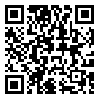Thu, Jan 8, 2026
[Archive]
Volume 13, Issue 3 (3-2015)
IJRM 2015, 13(3): 181-184 |
Back to browse issues page
Download citation:
BibTeX | RIS | EndNote | Medlars | ProCite | Reference Manager | RefWorks
Send citation to:



BibTeX | RIS | EndNote | Medlars | ProCite | Reference Manager | RefWorks
Send citation to:
Etemadi K, Basir B, Ghahremani S. Neonatal diagnosis of 49, XXXXY syndrome. IJRM 2015; 13 (3) :181-184
URL: http://ijrm.ir/article-1-632-en.html
URL: http://ijrm.ir/article-1-632-en.html
1- Department of Molecular Medicine and Genetic, School of Medicine, Hamadan University of Medical Sciences, Hamadan, Iran , Katayoon_Etemadi@yahoo.com
2- Department of Pediatrics, School of Medicine, Hamadan University of Medical Sciences, Hamadan, Iran
3- Cytogenetic Center, Shahid Beheshti Hospital, Hamadan University of Medical Sciences, Hamadan, Iran
2- Department of Pediatrics, School of Medicine, Hamadan University of Medical Sciences, Hamadan, Iran
3- Cytogenetic Center, Shahid Beheshti Hospital, Hamadan University of Medical Sciences, Hamadan, Iran
Abstract: (7949 Views)
Background: 49, XXXXY syndrome is a rare sex chromosomal disorder, occurring in 1 per 85,000-100,000 male births. The classical phenotype is ambiguous genitalia, facial dysmorphism, mental retardation and a combination of cardiac, skeletal and other malformations.
Case: A two month-old boy with intrauterine growth restriction (IUGR) and low birth weight, facial dysmorphism, clinodactyly in feet, microphallus, and right undescendent testis were seen by neonatologist. Chromosomal studies via techniques of GTG-banding showed the constitution to be 49,XXXXY in all cells. He was visited by the pediatric cardiologist for congenital heart disease. No obvious malformation and congenital heart disease were seen.
Conclusion: In the case, the main presentation of IUGR and low birth weight, clinodactyly with facial dysmorphism and genital abnormalities led to a suspicion of a sex chromosome aneuploidy which was subsequently confirmed by chromosomal analysis.
Case: A two month-old boy with intrauterine growth restriction (IUGR) and low birth weight, facial dysmorphism, clinodactyly in feet, microphallus, and right undescendent testis were seen by neonatologist. Chromosomal studies via techniques of GTG-banding showed the constitution to be 49,XXXXY in all cells. He was visited by the pediatric cardiologist for congenital heart disease. No obvious malformation and congenital heart disease were seen.
Conclusion: In the case, the main presentation of IUGR and low birth weight, clinodactyly with facial dysmorphism and genital abnormalities led to a suspicion of a sex chromosome aneuploidy which was subsequently confirmed by chromosomal analysis.
Type of Study: Original Article |
References
1. Fraccaro M, Kaijser K, Lindsten J. A child with 49 chromosomes. Lancet 1960, 22: 899-902. [DOI:10.1016/S0140-6736(60)91963-2]
2. Sprouse C, Tosi L, Stapleton E, Gropman AL, Mitchell FL, Peret R, et al. Musculoskeletal anomalies in a large cohort of boys with 49,XXXXY. Am J Med Genet C Semin Med Genet 2013, 163: 44-49. [DOI:10.1002/ajmg.c.31354]
3. Gropman AL, Rogol A, Fennoy I, Sadeghin T, Sinn S, Jameson R, et al. Clinical variability and novel neurodevelopmental findings in 49,XXXXY syndrome. Am J Med Genet 2010, 152A: 1523-1530. [DOI:10.1002/ajmg.a.33307]
4. Tartaglia N, Ayari N, Howell S, D'Epagnier C, Zeitler P. 48,XXYY, 48,XXXY and 49,XXXXY syndromes: not just variants of Klinefelter syndrome. Acta Paediatr 2011, 100: 851-860. [DOI:10.1111/j.1651-2227.2011.02235.x]
5. Alijanpour M, Hadipour A, Taghavi M. [A Rare Case with 49,XXXXY syndrome]. J Babol Univ Med Sci 2012, 14: 102-106. (In Persian)
6. Hadipour F, Shafeghati Y, Bagherizadeh E, Behjati F,Hadipour Z. Fraccaro Syndrome: Report of two Iranian cases: An Infant and an adult in a family. Acta Medica Iranica 2013, 51:907-909.
7. Peet J, Weaver DD, Vance GH. 49,XXXXY: a distinct phenotype. Three new cases and review. J Med Genet 1998, 35: 420-424. [DOI:10.1136/jmg.35.5.420]
8. Kidszun A, Fuchs AJ, Russo A, Bartsch M, Frey-Mahn G, Beyer V, et al. Skeletal abnormalities of the upper limbs- Neonatal diagnosis of 49,XXXXY syndrome. Gene 2012, 508: 117-120. [DOI:10.1016/j.gene.2012.07.053]
9. Hou JW. 49,XXXXY syndrome. Chang Gung Med J 2004, 27: 551-554.
Send email to the article author
| Rights and permissions | |
 |
This work is licensed under a Creative Commons Attribution-NonCommercial 4.0 International License. |




